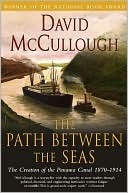More on this book
Community
Kindle Notes & Highlights
The creation of the Panama Canal was far more than a vast, unprecedented feat of engineering. It was a profoundly important historic event and a sweeping human drama not unlike that of war. Apart from wars, it represented the largest, most costly single effort ever before mounted anywhere on earth. It held the world’s attention over a span of forty years. It affected the lives of tens of thousands of people at every level of society and of virtually every race and nationality. Great reputations were made and destroyed. For numbers of men and women it was the adventure of a lifetime.
Far better it is to dare mighty things, to win glorious triumphs, even though checkered by failure, than to take rank with those poor spirits who neither enjoy much nor suffer much, because they live in the gray twilight that knows not victory or defeat. —THEODORE ROOSEVELT
The Erie Canal, though built for shallow-draft canal barges, was nonetheless the longest canal in the world,
The level of the Pacific was not twenty feet higher than that of the Atlantic, as had been the accepted view for centuries. Sea level was sea level, the same on both sides. The difference was in the size of their tides.
The original city of Panama had been founded in 1519, or just six years after Balboa’s discovery of the Pacific, and by an extraordinarily treacherous individual, Pedro Arias de Ávila, usually referred to as Pedrarias, who had been governor of Castilla del Oro, as the Central American isthmus was known, and who, to solidify his power, had Balboa beheaded on a trumped-up charge of treason.
Panama means “a place where many fishes are taken.”
two seasons in Panama: the season Ferdinand de Lesseps had seen and the wet season. The dry season, with its clear skies and trade winds, began normally about mid-December and lasted four months, during which, in Panama City, water carts had to be used to keep the dust down. Then, abruptly, about the first of May, the rains returned. It did not rain all the time in the wet season, as many supposed. In a country where an inch of rain can fall in an hour, 120 or 130 inches in a year may not mean a great many more than 120 or 130 hours of rain all told. Some of the most torrential downpours
...more
In the single month of November, when the heaviest storms struck, rainfall along the Chagres basin—on the Atlantic slope, that is—could range from two to three feet.
Yellow fever—yellow jack, fièvre jaune, fiebre amarilla, the “American plague”—had been a terror of seamen for centuries. A single case on board ship could mean death for the entire crew. The legendary Flying Dutchman was founded on the story of a ship condemned to haunt the seas after yellow fever broke out on board and no country would permit the ship in its harbors. The Philadelphia yellow-fever epidemic of 1793 had been as savage as an attack of bubonic plague and doomed the supremacy of Philadelphia among the cities of North America.
The word “malaria” was from the Italian mal’aria (“bad air”), and it had been widely agreed long since that bad air, “noxious effluvium”—poisonous marsh gas in particular—was the cause.
Among the more curious facts about the French canal at Panama is that about a third of it was dug by Americans.
That de Lesseps had neglected to send to Panama a single specialist in railroads was among his gravest errors.


